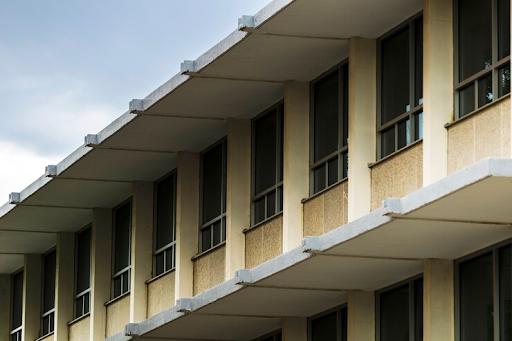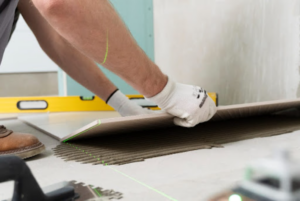Imagine stepping into your home on a scorching summer day. The air conditioning hums diligently, but a wave of heat still washes over you. Conversely, picture a chilly winter evening, bundled up in layers yet feeling a persistent draft. These scenarios, unfortunately, are all too familiar for many homeowners. The culprit? Inadequate Residential Building Insulation.
Residential building insulation acts as the invisible shield of your home, silently regulating its temperature and creating a comfortable, healthy, and energy-efficient living environment. But its significance extends far beyond simply keeping you warm in winter and cool in summer. Let’s delve deeper into the multifaceted benefits of investing in proper insulation for your abode.
Energy Efficiency: Slashing Costs and Saving the Planet
One of the most compelling reasons to prioritize residential building insulation is its profound impact on energy consumption. By acting as a thermal barrier, it effectively traps heat during cold weather and prevents excessive heat gain during hot seasons. This translates to a dramatic reduction in the workload placed on your heating and cooling systems.
Imagine this: a well-insulated home can lead to energy savings of 30% or more, according to various researched data available. This translates to real financial benefits, significantly reducing your monthly energy bills. Over time, these savings can accumulate into a substantial sum, making Residential Building Insulation a cost-effective investment that pays off handsomely.
But the benefits extend beyond your wallet. By curbing energy consumption, residential building insulation plays a crucial role in environmental protection. Reduced reliance on fossil fuels for heating and cooling translates to lower greenhouse gas emissions, contributing to a cleaner and more sustainable future for our planet.
Comfort Reigns Supreme: Creating a Haven of Tranquility
Residential building insulation does more than just save you money; it enhances your overall comfort and well-being within your home. It ensures consistent and comfortable temperatures throughout the year, eliminating drafts and hot spots that can disrupt your peace. This is especially crucial during extreme weather conditions, when maintaining a comfortable indoor temperature becomes a challenge.
Imagine stepping into a home on a sweltering summer day, greeted by a wave of cool air instead of stifling heat. Or picture a cozy winter evening, snuggled up in warmth without feeling the constant chill of drafts. Residential Building Insulation makes these scenarios a reality, creating a haven of comfort and tranquility for you and your family.
Beyond Comfort: Fostering a Healthier Living Environment
The impact of residential building insulation goes beyond temperature control and comfort. It plays a vital role in maintaining good indoor air quality, a crucial factor for your health and well-being. Proper insulation helps prevent condensation and moisture buildup within walls and ceilings, which can lead to mold growth and other health problems.
Mold spores can trigger respiratory issues, allergies, and even aggravate asthma. By controlling moisture levels and preventing condensation, Residential Building Insulation contributes to a healthier living environment for you and your family, allowing you to breathe easy and enjoy a healthier home.
Durability and Value: A Wise Investment for the Future
The benefits of residential building insulation extend far beyond immediate comfort and energy savings. It also plays a significant role in enhancing the durability and value of your property. Well-insulated homes are generally considered more energy-efficient and desirable by potential buyers, potentially fetching a higher selling price compared to poorly insulated houses.
Furthermore, proper insulation can help extend the lifespan of your roof, siding, and other building components. By shielding them from extreme temperature fluctuations, residential building insulation helps prevent premature wear and tear, reducing the need for costly repairs and replacements down the line.
Choosing the Right Armor for Your Home: A Journey of Options
With a plethora of residential building insulation options available in the market, selecting the right one for your specific needs is crucial. Factors like climate, building type, budget, and desired R-value (a measure of thermal resistance) should all be considered when making your choice.
Common insulation materials include fiberglass, spray foam, extruded polystyrene (XPS), cellulose, and rockwool, each offering unique advantages and disadvantages. Fiberglass, for instance, is a cost-effective and versatile option, while spray foam boasts superior insulation properties but comes at a higher cost. Extruded polystyrene (XPS) has higher long term thermal resistance (R Value) and low water absorption properties and Cellulose is an eco-friendly choice made from recycled paper, while rockwool offers excellent fire resistance.
Consulting with a qualified insulation professional can be invaluable in navigating these options. They can assess your home’s specific needs, recommend the most suitable insulation materials and installation methods, and ensure optimal performance for years to come.
Taking Action: Reap the Rewards of Proper Insulation
Now that you understand the immense benefits of residential building insulation, it’s time to take action and transform your home into a haven of comfort, efficiency, and health. Here are some practical steps you can take:
1. Conduct an Energy Audit:
Start by scheduling an energy audit with a qualified professional. This comprehensive assessment will identify areas of energy loss in your home, including inadequate insulation. The auditor will provide recommendations for improvements, including the type and amount of insulation needed for different areas of your home.
2. Research Insulation Options:
Once you have the recommendations from the audit, delve deeper into researching different Residential Building Insulation options. Familiarize yourself with the various materials available, their R-values, installation methods, and associated costs. Consider factors like your climate, budget, and DIY capabilities when making your decision.
3. Consult with Insulation Professionals:
Seek advice from reputable insulation contractors in your area. They can provide personalized recommendations based on your home’s specific needs and answer any questions you may have about different insulation materials and installation processes.
4. Get Quotes and Choose a Contractor:
Obtain quotes from several qualified contractors and compare their pricing, experience, and warranties. Choose a contractor with a proven track record, proper licensing and insurance, and a commitment to using high-quality materials and following industry best practices.
5. Invest in Your Home’s Future:
Remember, residential building insulation is an investment that pays off in multiple ways. While the initial cost may seem significant, the long-term benefits in terms of energy savings, improved comfort, increased home value, and a healthier living environment far outweigh the initial investment.
Taking the first step towards a more comfortable, efficient, and healthy home is within your reach. By prioritizing residential building insulation, you can create a lasting positive impact on your wallet, your well-being, and the environment. Don’t hesitate to consult with professionals and explore your options today. Your future self will thank you for it!






